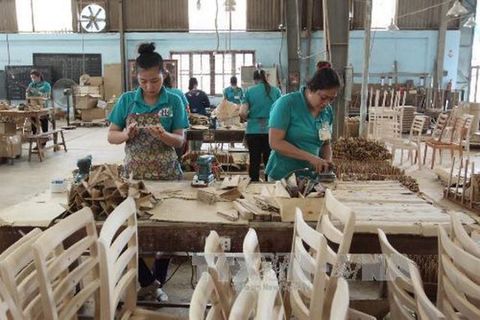
Wood processing in Binh Duong Province. – VNA Photo Thanh Vu
Binh Duong and Dong Nai provinces, which have the highest export growth rate and number of businesses in the wooden products sector, are poised to take advantage of the benefits of the Comprehensive and Progressive Agreement for Trans-Pacific Partnership (CPTPP).
The province has around 1,215 wood processing businesses, with 905 of them domestic firms with VND10.8 trillion (US$469.6 million) of registered funds, and 310 foreign companies with a total of US$2.3 billion, according to Binh Duong’s Department of Industry and Trade.
More than 250,000 employees work in the industry, and of that number, 40-45 per cent of them are seasonal.
Last year, total export turnover from forestry and wood products in Viet Nam was over $9.3 billion. The industry had the highest surplus export value in Binh Duong Province.
Phan Van Binh, chairman of the Dong Nai Wood and Craft Association, said the province’s wood exports at the beginning of 2019 were 10 per cent higher than the same period last year.
Exports for this year are expected to be 12 – 15 per cent higher than 2018, which was nearly $1.4 billion.
Many businesses in the industry have been successful in finding partners and forming contracts for the year, he added.
Dien Quang Hiep, chairman of the Binh Duong Furniture Association, said the Comprehensive and Progressive Agreement for Trans-Pacific Partnership has opened up new markets and opportunities for Viet Nam’s wood industry.
The partnership can reduce the industry’s reliance on markets such as the US and Europe, and help businesses further penetrate markets such as Japan and Canada.
However, experts have said that businesses need to work on improving their workforce, and thus productivity and product quality.
More high quality materials (rubberwood and acacia wood) are needed for production as well as raw material exports. Trade facilitation also needs to be improved.
Viet Nam’s forestry exports in the first four months of the year totalled $3.28 billion, 17.8 per cent higher than in 2018.
The industry’s main markets are the US, Japan, the EU, China and South Korea. — VNS